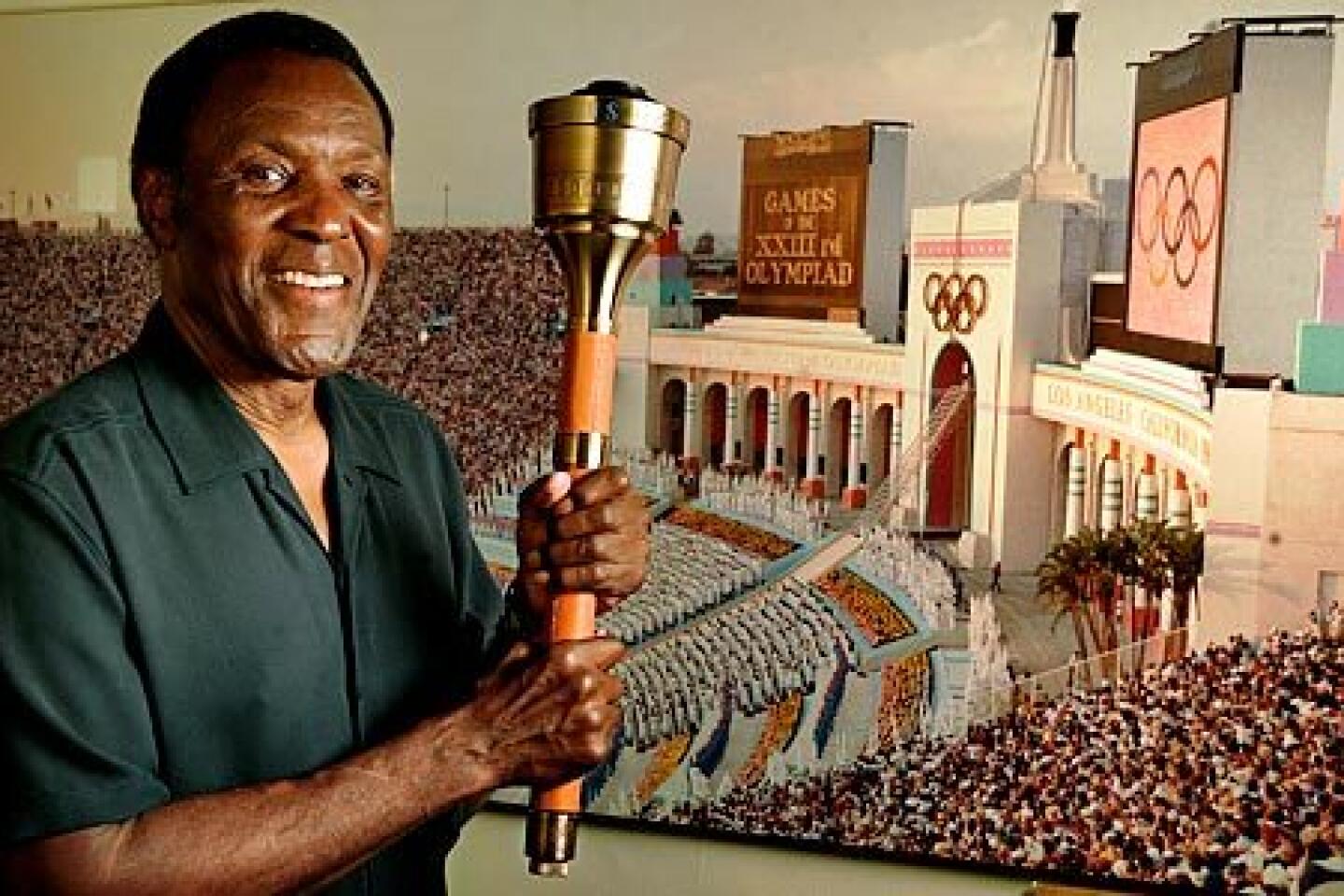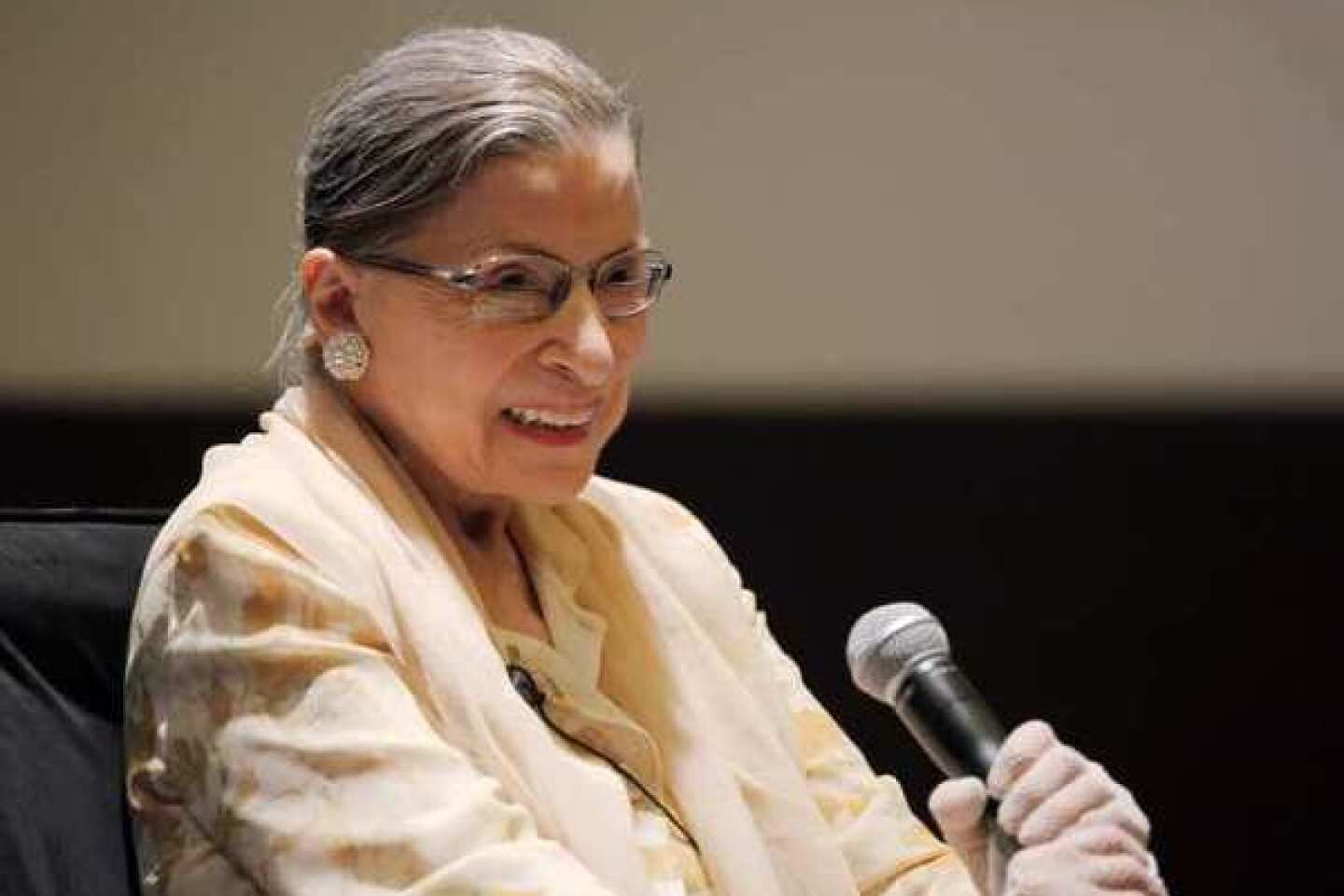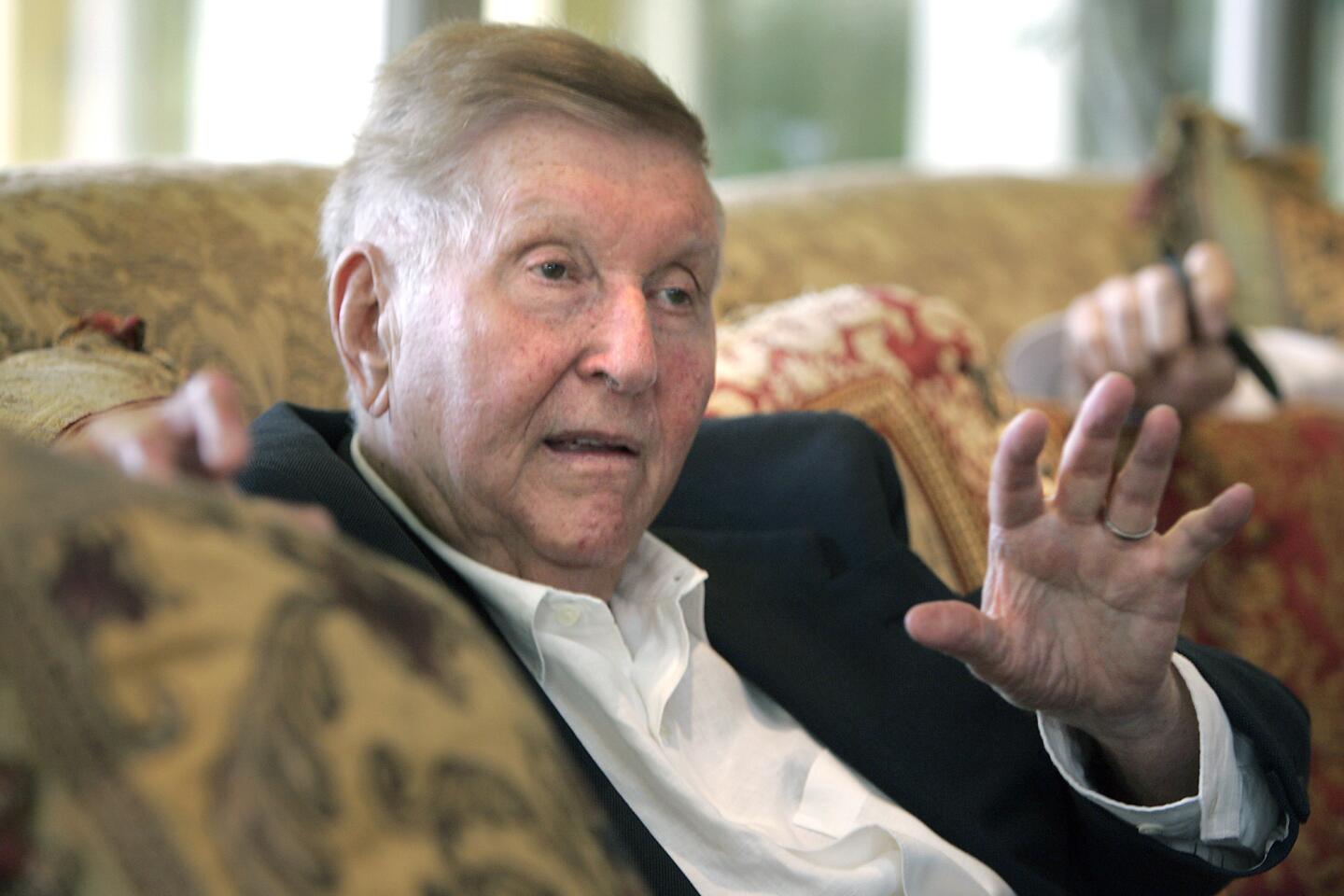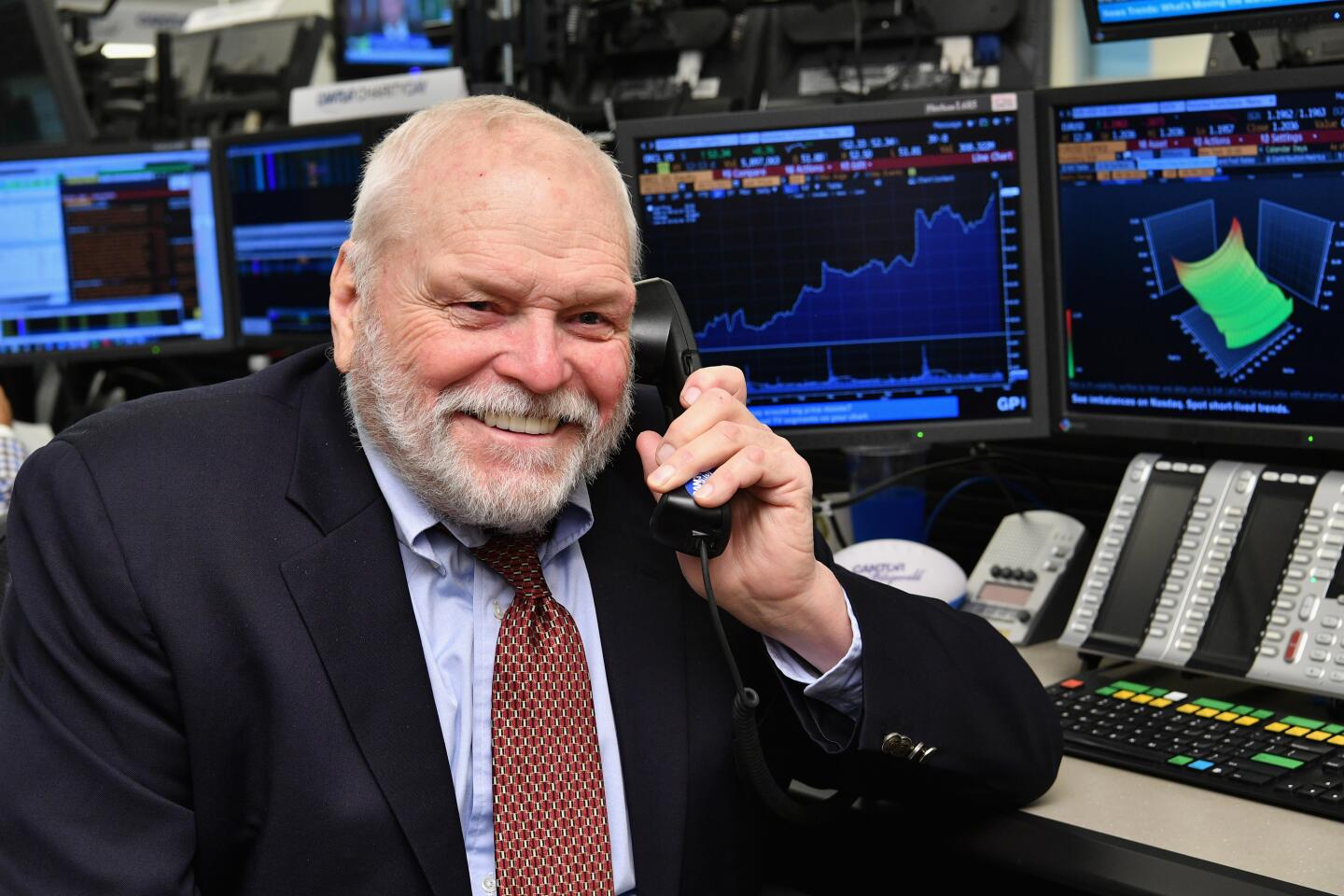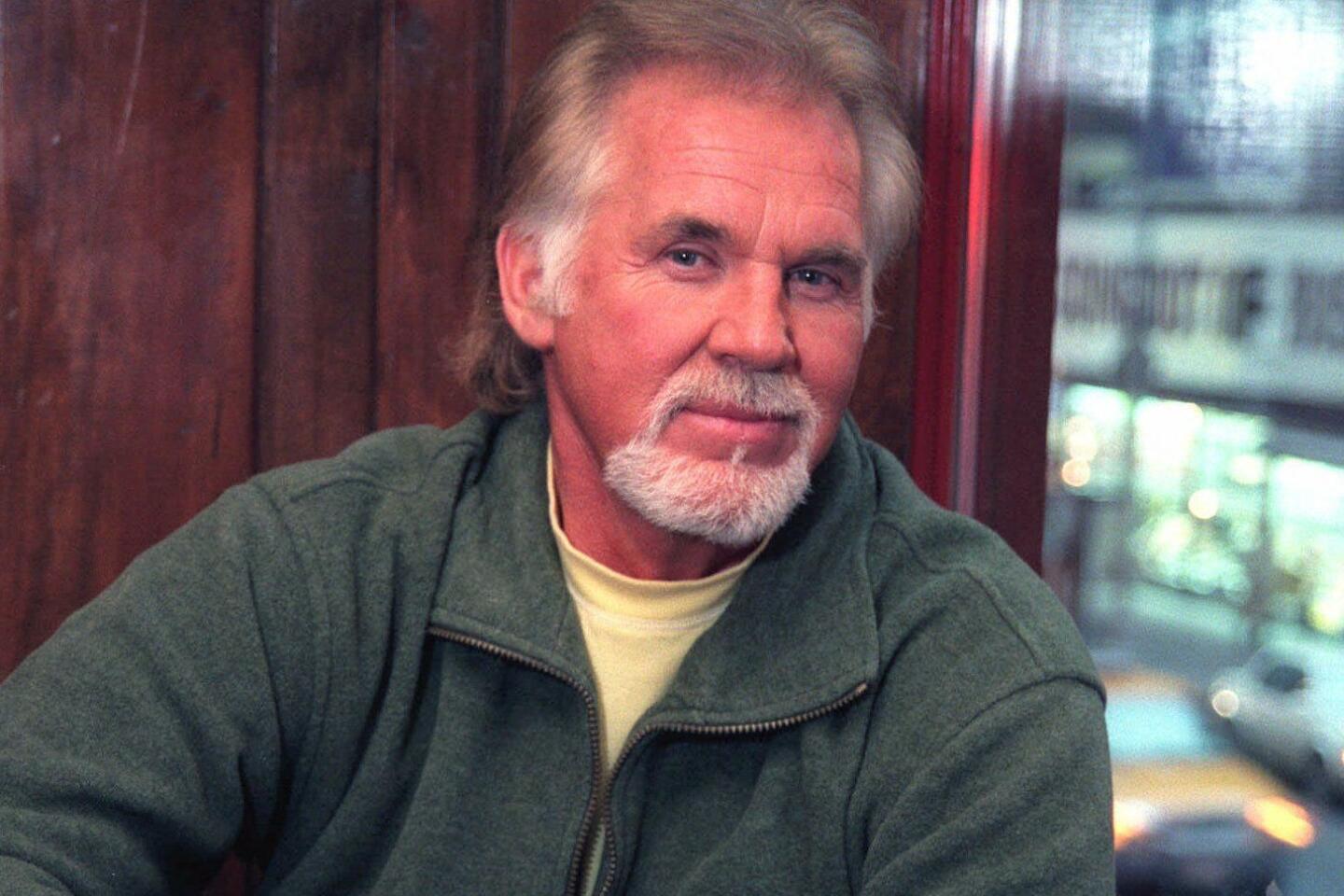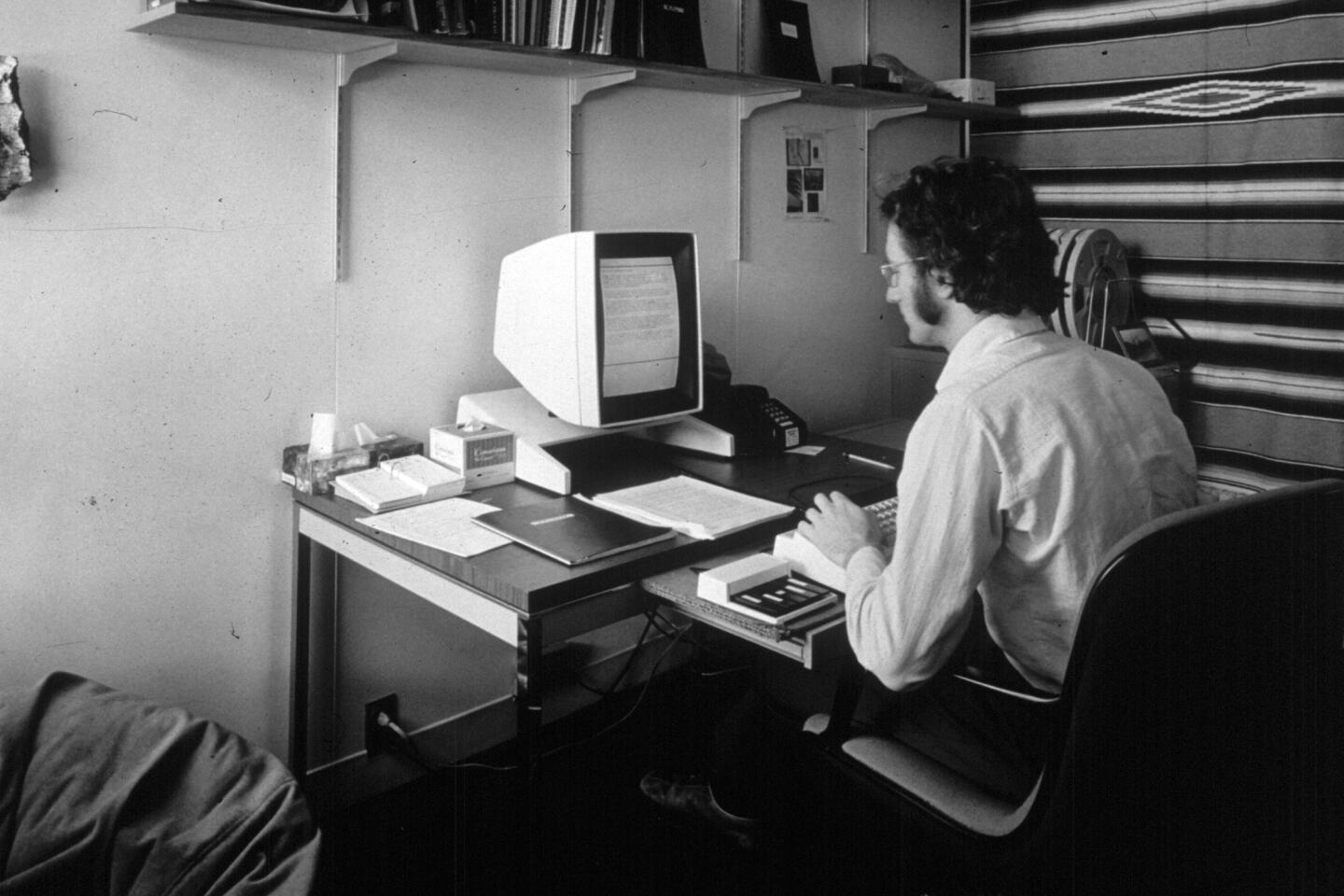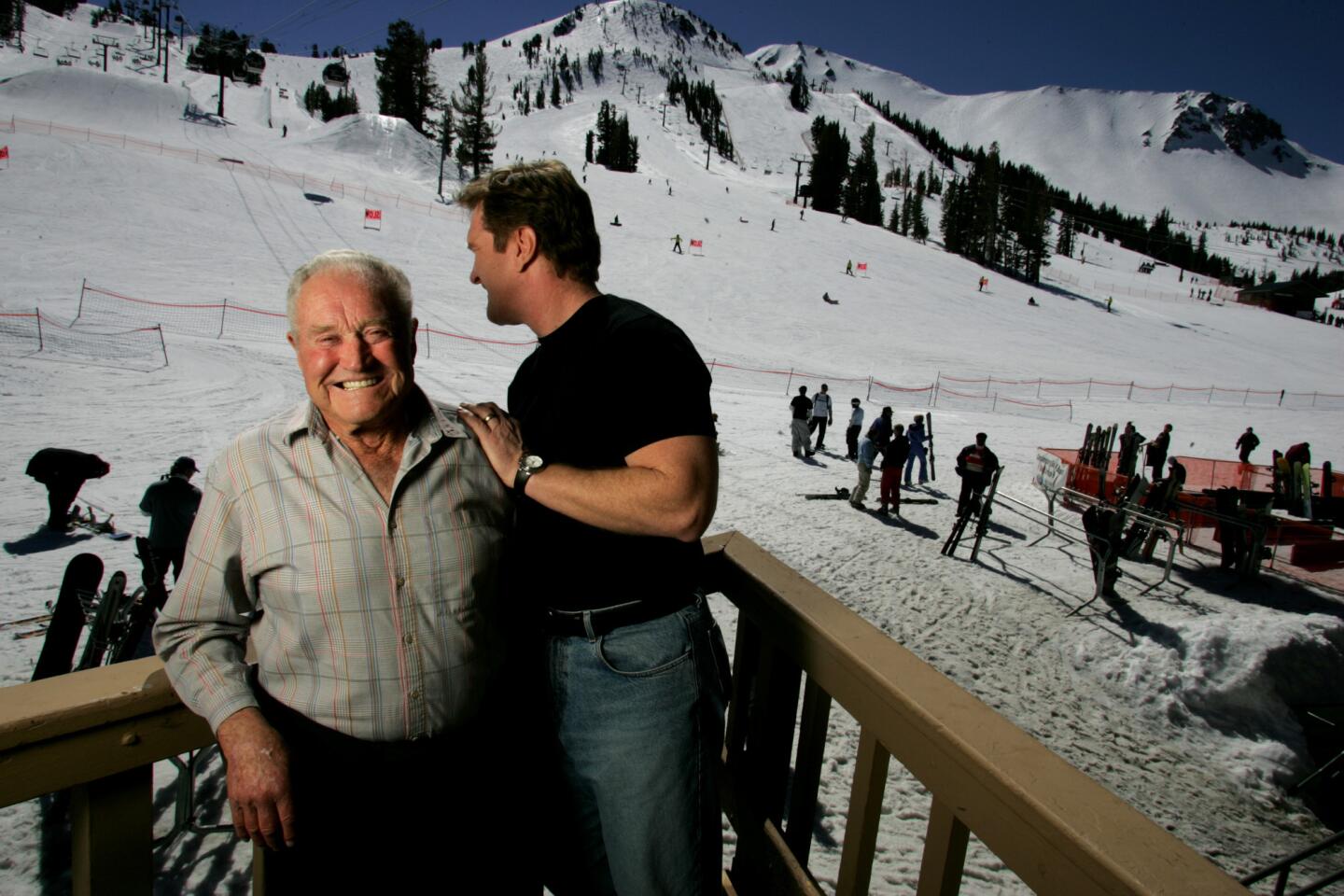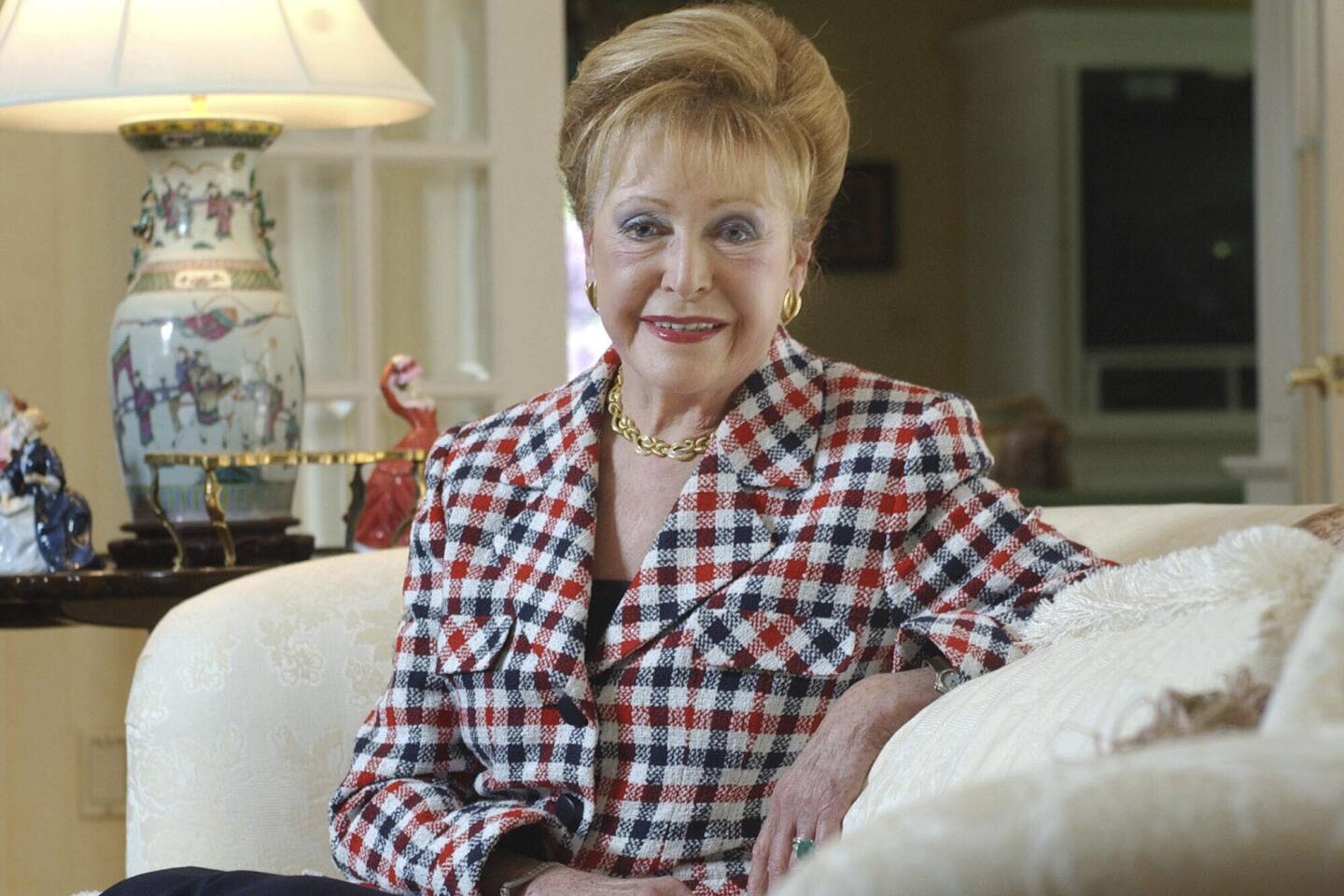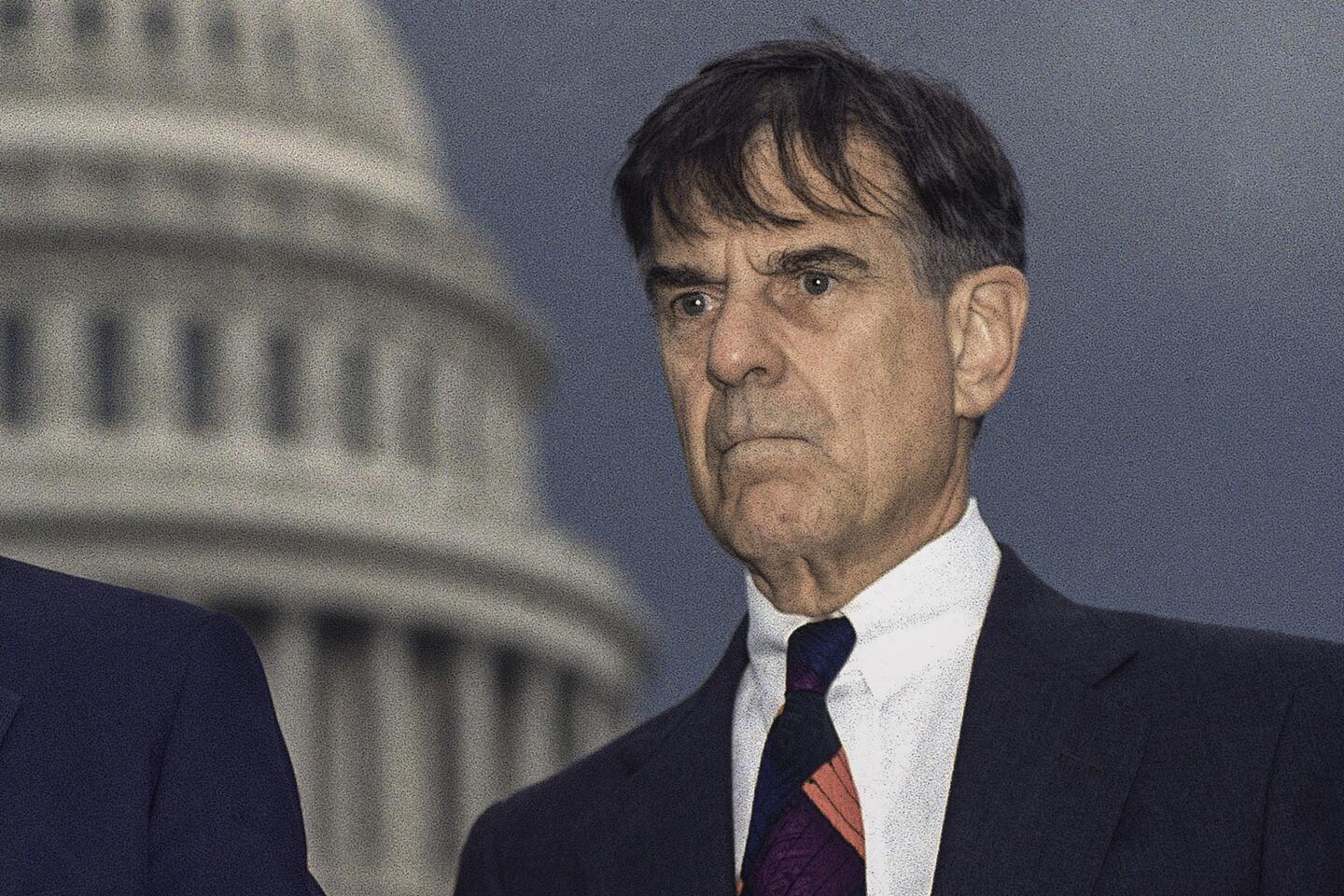Pierre Cardin, French couturier who pioneered designer licensing, dies at 98
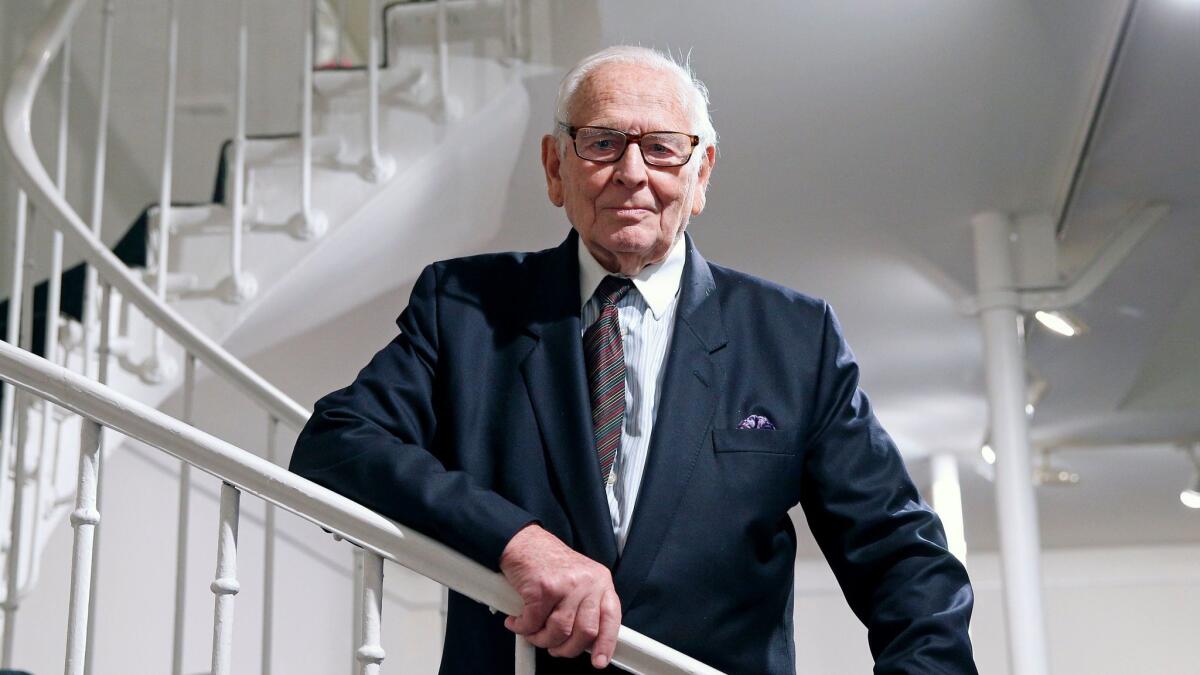
- Share via
Trained in the Paris workrooms of Christian Dior, Elsa Schiaparelli and Jeanne Paquin, Pierre Cardin saw his future unfold before him at an early age.
Building on the pioneering innovations of his mentors, Cardin rocketed to global fame with his ready-to-wear designer label and erected an apparel and product empire by putting his name not just on clothing but also on sunglasses, luggage, carpets and even kitchen appliances.
Cardin was the first women’s designer to launch a collection for men — neckties, shirts, jackets and more — and the first French couturier to venture eastward to Asia, where much of his catalogue was made and where a largely untapped market awaited.
By the end of the 1960s, his name alone was a magnet for the fashion-minded who found his designs to be hip, provocative and sometimes wonderfully outrageous.
Admired and imitated until the end, Cardin died Tuesday at a hospital outside Paris, his family told French media. France’s Academy of Fine Arts announced his death in a tweet but did not give a cause. Cardin was 98.
Nine years after opening his first salon in 1950, Cardin broke with the custom-order clothing tradition and styled a ready-to-wear collection for Printemps, a Paris department store. With that he became the first French couturier to create designer-label ready-to-wear clothes.
He also became the first French designer to make inroads into the Asian fashion market, first doing business in Japan starting in 1957 and China in the 1970s. He staged the first French couture fashion show in Beijing in 1979.
“It was far-sighted of Cardin,” Valerie Steele, a fashion historian at the Fashion Institute of Technology in New York City, told The Times some years ago. “Nowadays the fashion industry depends so much on Asia, not only to produce clothes but also as a major consumer market.” Cardin led the way, she said.
He didn’t invent designer licensing. His former employer, Dior, had dabbled in it in the late 1940s when he put his name on women’s stockings made by a U.S. manufacturer. Cardin didn’t invent the designer boutique either. Another of his former employers, Schiaparelli, had her own shop in Paris when that was a novelty.
It was Cardin, however, who expanded these ideas to global proportion. “He was a talented designer and a talented businessman. You don’t often see that,” fashion historian Victoria Steele, director of special collections at UCLA’s Young Research Library, said in a 2005 interview with The Times. “In his fashion designs and his approach to business, he was attuned to his moment in history. He demonstrated a certain kind of shrewdness.”
He first got into the ready-to-wear business to help finance his custom-order collections.
“All my money was going to my couture shows and I needed something commercial to support my employees,” Cardin told the London Financial Times in 2000. “I approached a friend who had a tie company and said, ‘Why don’t I design something you produce?’“
His name soon conjured images of bold, geometric shapes infused with a youthful confidence. He styled an A-line mini-dress to wear with tall boots, a “bubble” dress that was gathered at the hem by a drawstring and a “chemise,” a short dress that tapers at the bottom.
For men, his collarless jackets without lapels set a trend in Europe and the United States when the Beatles started wearing them in the early 1960s.
Through the decade Cardin’s unconventional style pressed the limits of French couture, an industry that was still supported primarily by old conservative money. While most French designers at his level used only fine silks and wools, Cardin experimented with synthetic fabrics.
He became known as the “space age” designer, for jumpsuits that suggested space capsule uniforms and the three-tier dresses that encircled a figure like hovering saucers. For men, his fitted pullover sweaters seemed inspired by the wardrobe for “Star Trek.”
It added to his glamorous image that film star friends Shirley MacLaine, Charlotte Rampling, Jeanne Moreau and others had front-row seats at his Paris fashion shows.
While his celebrity image revolved around avant-garde fashion, a fair part of each collection consisted of more traditional styles. From the time he opened his own salon in the 1950s, he showed smart updates on couture creations that appealed to more conservative customers. His linen dresses with crisscrossed necklines and his coats with pleats from shoulder to hem were successes in the ’50s. His tweed suits with “cocoon” capes were popular in the ’60s. These and similar styles were more in tune with the powerful women in public life who wore his label, among them French President Georges Pompidou’s wife, Claude, and Argentina’s first lady Eva Peron.
He struck a similar balance in his menswear collections, setting trends with his updated English Edwardian styles and his Beatles jackets that helped launch the “peacock revolution” in men’s fashion in the 1960s while showing comparatively moderate variations on menswear staples. He was known for his narrow-cut suits, and his jackets that tapered at the waist, designs geared toward a wide range of men in France, England and the U.S.
Once he redefined the role of a French couturier, he reached for new challenges. He opened Espace Cardin in 1970, a Paris theater for contemporary drama and music that served his passion for the arts. In subtle ways it also served his international business interests. He was negotiating new markets in the Soviet Union when he brought a rock opera, “Junon and Avos,” from Moscow to Espace Cardin in the early 1980s.
“People think because you’re a dress designer you must be an idiot,” Cardin said in a 1971 interview with The Times. “I am delighted to say my last two collections were particularly brilliant successes. That makes it more difficult for people to criticize me for what I’m doing.”
In 1981 he bought Maxim’s, the quintessential Paris restaurant, and was quick to point out which tables once had been the favorites of legendary romantic couples; the Duke and Duchess of Windsor, billionaire Aristotle Onassis and opera star Maria Callas.
He opened replicas of Maxim’s in such cities as London and Singapore and created the Maxim’s boutique for logo-decorated china, specialty foods and novelty items.
Then came “Residence Maxim,” the luxury hotel he opened in Paris, followed by a string of Maxim’s de Paris hotels including one in Palm Springs that opened in 1986. Four years later it became part of the Hyatt Regency hotel chain.
Cardin’s licensing business grew to include some 800 agreements in the 1980s. Through the decade, Yves St. Laurent and Hubert de Givenchy in Paris, Gucci in Italy, Bill Blass, Ralph Lauren and a number of other U.S. designers expanded in the same way.
Cardin stayed a step ahead. “His name can be worn, walked on, slept in, sat upon, munched, drunk, flown, pedaled or driven in 69 countries,” Time magazine noted in 1979.
A trim, vigorous man with dark, sensitive eyes and a globe-trotter’s datebook, he made no secret of the fact that work and play were the same for him. He traveled constantly, never married and had few friends. For several years starting in the mid-1950s his most constant companion was Andre Oliver, his leading design assistant.
He was discreet about his romantic relationships but could not keep secret his affair with Moreau in the early 1960s. She later said that she pursued him, starting with the flowers she sent him soon after they met.
The couple was photographed at the theater and sunbathing on a yacht. By 1965, however, Cardin had moved on. “I was in love with her for five years but ... we could never be alone, it was too much,” he said in a 2002 interview with the New York Times.
While they were together, Cardin designed costumes for several of Moreau’s movies including “Bay of Angels” in 1963 and “The Yellow Rolls Royce” in 1964. It was not his only venture into film. One of his earliest credits was as costume designer for Jean Cocteau’s film “Beauty and the Beast” in 1946. He also created the wardrobe for Patrick Macnee, the leading man in the ’60s television series “The Avengers.”
Circling the globe to meet famous people and dropping their names in conversation became guiding principles of Cardin’s life. “I know all the stars,” he told the Los Angeles Times in 1986. “Gregory Peck, Cary Grant, Barbra Streisand, Liza Minnelli, Madame Gorbachev, Madame Indira Gandhi, the Empress of Japan, those are the people I enjoy meeting.”
In his travels he acquired some 30 residences around the world, but his true home was Paris. He lived in a town house around the corner from his office on Faubourg Saint-Honoré. He also spent time in the “Bubble Palace” he built on the French Riviera in the 1970s. The concrete and glass creation by French architect Antti Lovage was filled with furniture Cardin designed. He started mass-producing a line of modern furniture in 1977.
The press was rarely invited to Cardin’s town house, which he shared with his sister Janine. She was 20 years his senior, a mother figure who kept house and cooked for him.
Born in San Andrea de Barbara near Venice, Italy, on July 2, 1922, to French parents, Alessandro and Maria, Cardin was the youngest of 11 children. His family later moved to southern France.
As a teenager Cardin became a tailor’s apprentice. During World War II he was an accountant for the French Red Cross. He moved to Paris in 1945 and got his first job in the couture fashion business at the house of Paquin.
He went on to work for Schiaparelli briefly before he moved to Dior in ’46 where he became the head of the workroom. Four years later, at 28, Cardin opened his own salon.
He held his place at the top of the fashion world through the ’60s and ’70s. Long after his heyday, he was admired for his staying power if not his newest designs. “His sheer longevity is remarkable in such a competitive field,” Valerie Steele said of Cardin’s career.
He attributed his success to his imaginative ideas, his frequent new ventures and his pay-as-you-go business policy. “I don’t borrow,” he told the New York Times in 1987. “I build for myself, day by day and step by step.”
By the late 1980s, Cardin’s business brought in about $1 billion, wholesale, wrote Richard Morais, author of “Pierre Cardin, The Man Who Became a Label” (1991). “Cardin must earn between $35 million and $45 million a year in royalty income worldwide,” Morais wrote. “That’s pure to-do-what-I-want-with cash.”
By the 1990s, the designer licensing phenomenon had tarnished the image of many of the biggest names in fashion, Cardin among them. The problem was not helped when copycat manufacturers made counterfeit designer-logo purses, sunglasses, luggage and scarves that were sold at swap meets and on boardwalks.
His competitors cut back their licensing contracts in the 1990s, hoping to regain their elite status, but Cardin did little to trim his production. At the same time the quality of his finest merchandise also seemed to be slipping, said senior officials of leading menswear stores who canceled their orders.
“Cardin contributed in a major way to 20th Century design, but his licensing has overshadowed the creative contribution,” Valerie Steele said in 2002.
Rourke is a former Times staff writer.
More to Read
Start your day right
Sign up for Essential California for the L.A. Times biggest news, features and recommendations in your inbox six days a week.
You may occasionally receive promotional content from the Los Angeles Times.

